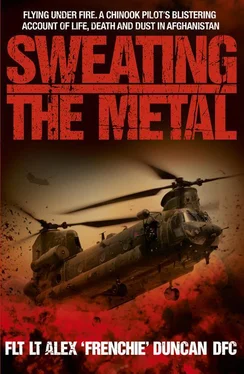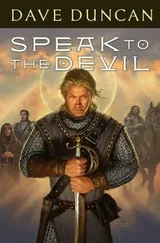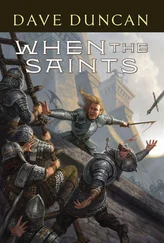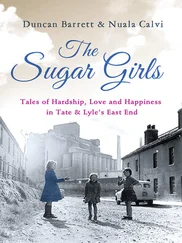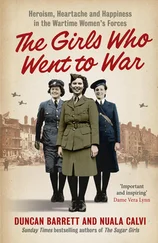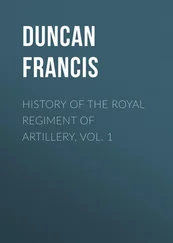The war in Afghanistan is often described as asymmetric – basically the concept of conflict between the powerful and the weak – but I sometimes wonder if it is us who are the weak partner. Sure, we have superior weapons, tactics and equipment. We have body armour, fast jets, heavy artillery and armoured vehicles. We have vastly greater numbers of troops, who are considerably more experienced and capable than those we face. But we’re not fighting on a level field. We are constrained by a moral and ethical code, and the binds and rules of an army of lawyers and theorists who abide by the tenets of the Geneva Conventions. We fight an enemy with no uniform; an enemy that is indistinguishable from the civilian population we seek to protect. It’s a David vs. Goliath conflict, and we all know who won that particular fight. The outcome of the war in Afghanistan is by no means certain.
None of that detracted from our preparations before deployment – or our stomach for the fight ahead. Being a summer deployment it’s hotter, so the physical toil is harder but that’s not the issue – mid-May tends to be when everything kicks off because it’s when the Taliban finish the poppy harvest, so we knew we’d be busy. The tempo was ramping up, so I think we knew it was going to be tough, although I don’t think any of us realised just how tough.
On the plus side, I don’t think we could have been more ready. JP had worked us exceptionally hard in the run-up, with by far the best pre-Det training (PDT) I’d ever done. We’d been based out of RAF Leuchars in Scotland and were using RAF Boulmer and RAF Spadeadam as radar units.
RAF Spadeadam isn’t a conventional RAF Base, but a unique facility spanning almost 10,000 acres of forest and mire on the border of Cumbria and Northumberland. It’s the only facility in Europe where aircrew can practise manoeuvres and tactics against the variety of threats and targets we face in contemporary warfare, and it attracts aircraft from the RAF, Army, Navy and NATO Forces. The survival of aircrews over Afghanistan, as well as the soldiers on the ground who depend on the air support they provide, all benefit from the training provided by RAF Spadeadam.
The training was just so realistic. We’d take off, speak to Boulmer – they’d been given a script by the training staff on what to say and, depending on what sortie we were doing and what mission number we’d give them, they would read a different script which might be them calling ‘Troops in contact’ or ‘Weapons systems in place’. It was brilliantly well organised – we even had a Hawk fast jet to work with us to provide emergency close air support.
Afterwards, we felt completely ready – I think once you get to this point, you want to get away, get the Det done and come home. It’s like a boxer coming up to a fight – he gears himself up and works harder and harder to peak at just the right time. That was us – we were really ramped up at that point. The difficulty is though, we don’t just need to peak on one night; we need that peak to last for two months. That’s a big ask! We worked very hard on the PDT, but not too hard, as we’d have ended up too tired. It left us on a high and at just the right level.
We marked our departure differently, too. We had a night out as a Flight at a local pub – it’s a place that 27 Squadron frequents a lot and they know that when we book a room there it’s time to run for cover! We play this game called Tequila Darts – the object is to throw the lowest number on the dartboard. If you do this you come out of the round. If you score the highest number, you drink a shot of tequila. If you score a 7 (as in 7 Squadron) you drink a shot of tequila; if you score 18 (18 Squadron) you drink a shot of tequila; if you score a triple 9 (i.e. 27) everybody else drinks a shot of tequila! So that’s the game.
As it progresses, everyone is more drunk, new rules appear and it’s a bit of a mess. You have ten seconds to make your way up to the dartboard, but after a while people are talking and don’t make it, so they have to drink a shot of tequila. People are counting you down ‘7, 8, 9… 10!’ and somebody grabs the dart and throws it at the board, people are falling over… It’s absolute carnage.
I’d phoned Alison to come and pick up German, Paul Farmer (otherwise known as ‘Piggy’) and me, but as soon as I put the phone down, I forgot I rang her and the three of us started walking. She eventually found us zigzagging our way up this unlit, winding country road. She stopped the car and was met with what constituted a train wreck; I tried to sit on her lap, German fell in a ditch, and Piggy just carried on walking. When we got back to the Mess I had to carry German up to his room – he was useless. To be fair, I wasn’t much better. I lost my balance in the toilets and did a straight body flop onto my back, taking a framed picture of an old F4 Phantom on the way down with me. I woke up with a cracked head, lying on my back staring up at the ceiling!
Hannah fell asleep in the Ladies and locked herself in; she told her boyfriend she’d be sober by the time he came to get her but she was absolutely wankered! It was a great night – lots of shared memories, bonding as a Flight. This was about a week before we deployed. We went straight off on leave that night and didn’t see each other again until the morning we flew out to KAF.
Alison dropped me off for this Det but we treated it as if I was just going off to work for the day – neither of us wanted to prolong the goodbye, so it was just a quick kiss, ‘See you in a couple of months; look after yourself.’ She drove away and as soon as I turned around, there were all my mates, all of us with our detachment haircuts – short and easy maintenance! All our kit went into a four-tonner, we got on the coach and off we went to Brize Norton. Next stop – Kandahar.
I don’t quite know what I was expecting, but it surprised me when I arrived at KAF and found that nothing had really changed. It was the same old dusty hole except on a larger scale, with a far greater number of REMFs and senior officers stronzing – that’s a metaphor we used for people who were strutting and bronzing at the same time – around. The base was now home to as many as 14,000 multinational personnel commanded by an RAF officer, Air Commodore Bob Judson. We were taking over from ‘B’ Flight, 18 Squadron, so after the usual clusterfuck of admin – filling in forms, reclaiming weapons etc. – they helped us load our kit into the same old dusty vehicles and drove us to our accommodation. We roomed as formed crews and the lads we were taking over from had all moved into other rooms, so ours were clean and ready for us. I’d be flying for the first part of the Det alongside Pete Winn, with Mick Fry and Barry Fulton in the rear. Mick’s a great bloke – a very experienced flight sergeant with a wickedly dry sense of humour who was a qualified crewman instructor at the OCF. Barry, known by everyone as ‘Jay’, was a brand new crewman.
We ramped up quickly, so after the usual drawing of morphine, zeroing weapons, and a couple of days of lectures about how life on the ground had changed, I did my TQ – with my good mate Aaron ‘Tourette’s’ Stewart again. Then we hit the ground running, crewing the IRT.
Things were fairly quiet initially; we picked up a British soldier classified as a T1 who was suffering from heat stress. There were a lot of heat stress casualties around at that time because the winter temperatures can be quite harsh in Helmand – below zero at night – and the rise in summer is both brutal and sudden, so there’s little time for them to acclimatise. We lifted a couple of civilian T1s from Lashkar Gah too and took them to the local hospital in Lash, and I even managed to get Pete Winn TQ’d so that was him all ticked up to handle the aircraft.
Читать дальше
